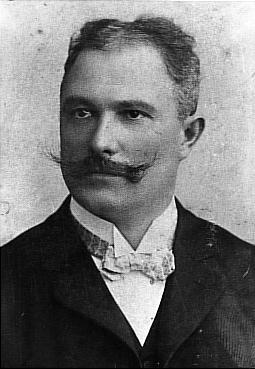
In 1862, Janez Puh was born into a Slovenian family in the village of Sakušak in what is now eastern Slovenia. He was one of many children (as many as nine according to some sources), but despite the modest conditions of his childhood, he went on to establish a company that helped to pioneer the automobile industry.
Puh left his rural family at a young age; he became a locksmith apprentice in nearby Ptuj when he was 12 years old. He was a skillful student and eventually moved to Graz, the German-speaking capital of Styria. This was an era when bicycles were all the rage in Europe, and Puh – known as “Johann Puch” in German -- developed a special passion for making bikes. At first, he repaired the simple designs common at that time. But Puh soon used his talents to come up with better, more comfortable bicycles.
At first, he worked for other employers, but in 1891, he established his own company, Johann Puch & Company, distributing and exporting top-quality Styria bikes. He had clients throughout Europe, and even managed to export many bikes to the United Kingdom. In 1893, he captured the attention of the cycling community by having one of his bikes come in third at the prestigious Vienna-Berlin bike race.
Such was the demand for bikes that in 1899, Puh began to manufacture his own bikes under the Johann Puch brand. The enterprise was a success and Puh's factory grew from year to yar. At a time before advertising was ubiquitous, Puh was aware of the benefits of effective promotional campaigns. He hired the best designers and printers to create eye-catching advertisements for his company.
Then, in the first decades of the 20th century, a new craze swept Europe: the internal combustion engine. Puh, who was attuned to the demands of the market, added automobiles and motorcycles to his lineup.
The gamble paid off. Before the outbreak of World War I, more than 20 different car designs came out of Puh's factory and some were even used by the Austro-Hungarian Imperial family. The company, which employed more than a thousand people, excelled in innovation; Puh himself held several patents.
In June 1914, just before the outbreak of the Great War, Puh died of a stroke. The company, however, lived on. During the war, it was a major producer of military vehicles. It later merged with other Austrian vehicle manufacturers to form Steyr-Daimler-Puch, which remained a major car and motorcycle manufacturer until the 1980s.
A museum devoted to Puh and his vehicles has been set up in Graz, while local villagers established a smaller collection in Puh's home village of Sakušak . Even though he spent most of his career in Graz, Slovenia considers Puh as one of its own – a Slovenian who pioneered the automobile industry at a time when self-powered vehicles were still a curiosity.

































































